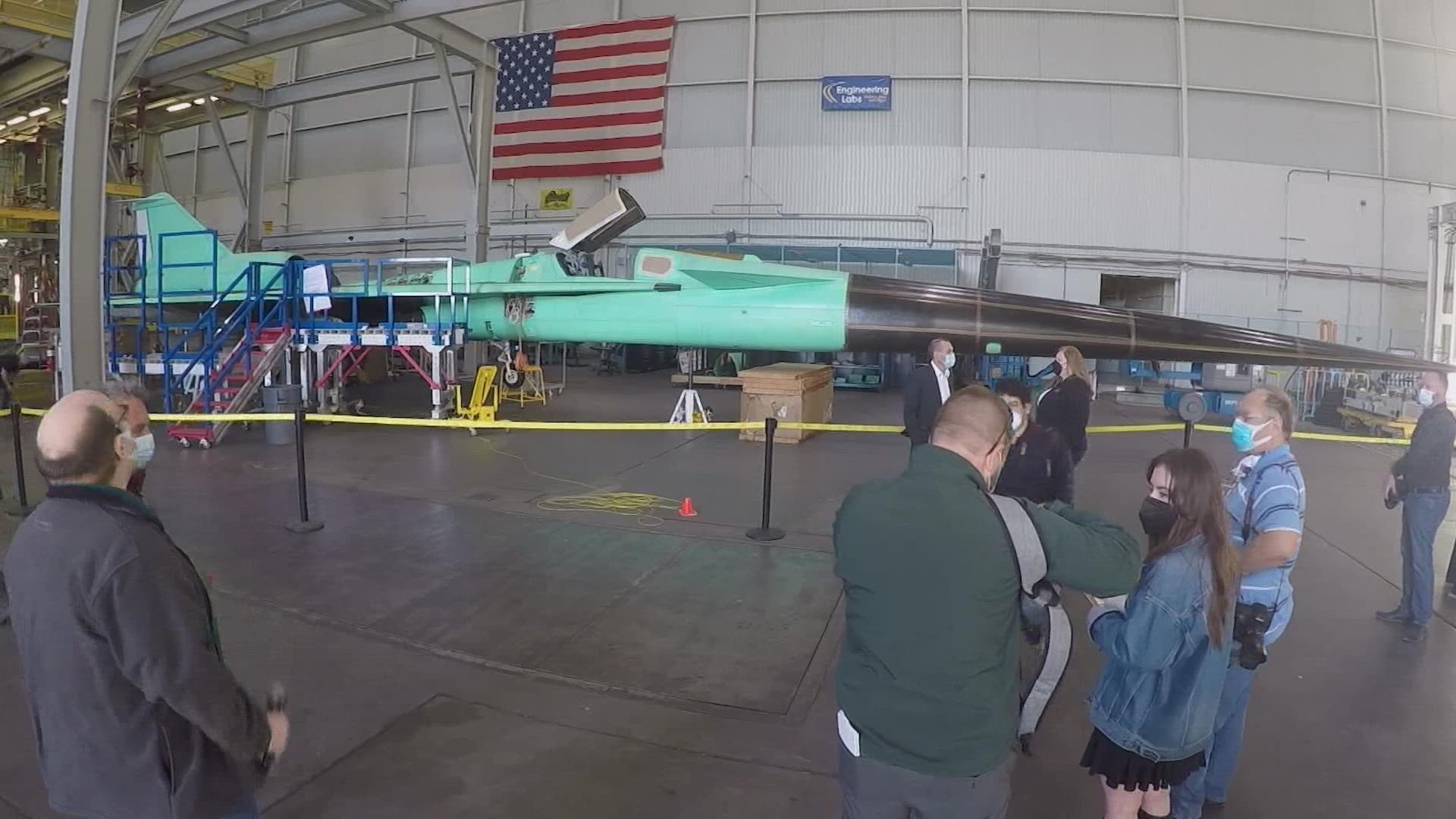FORT WORTH, Texas — It’s not uncommon for Lockheed Martin, in Fort Worth, to work in secret.
But this latest project, with NASA, they’ve tried to keep really quiet.
“It’s like a thump,” said Erick Schrock, Lockheed Martin Skunk Works project management director. “A thump, thump. Much like your neighbor closing their car door from about 50 feet away.”
It’s a project many experts have worked on and failed for the past 50 years: supersonic air travel.
Supersonic jets, like the Concorde, flew faster than the speed of sound and could deliver passengers to their destinations in half the time as most commercial airliners.
The problem with going so fast is the sonic boom.
“The public was extremely annoyed with these booms, because they almost sounded like little bombs going off,” said Craig Nikol, NASA Low Boom Flight Demonstration Mission project manager. “They’re very startling
“Grandmothers probably had heart attacks,” said Scott Zink, Lockheed Martin Skunk Works aeronautical engineer. “It’s just very alarming like, ‘what just happened?’”
Because of that, supersonic flight, over land, was banned in 1973.
Ever since then, engineers reasoned that if they could make a sonic boom quieter, they could revolutionize air travel. That’s why Lockheed and NASA invited media members to the Fort Worth facility Friday to announce they’ve done it.”
“This is the first airplane born from the ground up with the intention of having a low sonic boom,” Schrock said.
The sonic boom from this new plane, the X-59, sounds like a car door shutting in the distance.
It's part of a project called X-59 QueSST (Quiet Supersonic Technology).
The plane achieves a quieter perceived sonic boom on the ground due to its complex engineering. The plane is long, about 100 feet long, and 30 feet of that is in the nose alone. By making the plane that long, the shockwaves which cause the sonic boom can be divided into smaller, quieter shockwaves.
The X-59 will also be one of the first planes that requires pilots to rely on cameras to see in front of them. The cockpit is lower than a typical seat, blocking a pilot’s forward view. This was done as another way to spread out those shockwaves.
The plane was engineered and built in California and is in Fort Worth to undergo testing. Lockheed and NASA expect the X-59 to make its first flight later this year.
Following subsequent flights over selected cities, data will be collected and submitted in an effort to get the flight ban repealed.
Officials are hoping to adopt a new policy that limits an aircraft based on the amount of sound it puts out instead of limiting its speed.
If successful, the X-59 could usher in a new era in aviation.
“We’ll be able to fly to our international destinations in half the time and spend more time on our vacations,” NASA Low Boom Flight Demonstration Mission deputy project manager Cathy Bahm said.
“And that, I think, could open up new industry and have commercial, supersonic flight available to the general public, which would be a real revolution in travel,” Nikol said.
If supersonic travel can get off the ground, business is sure to be booming.

